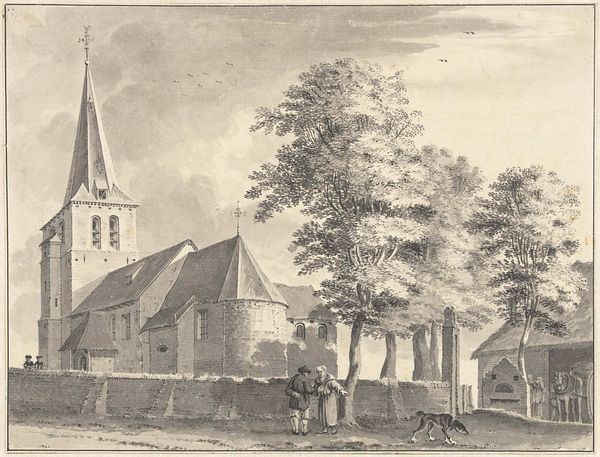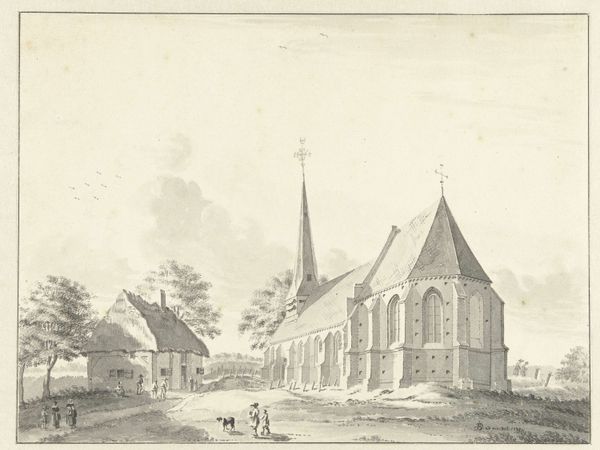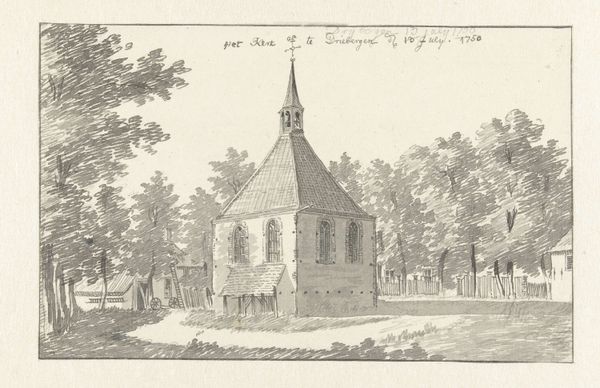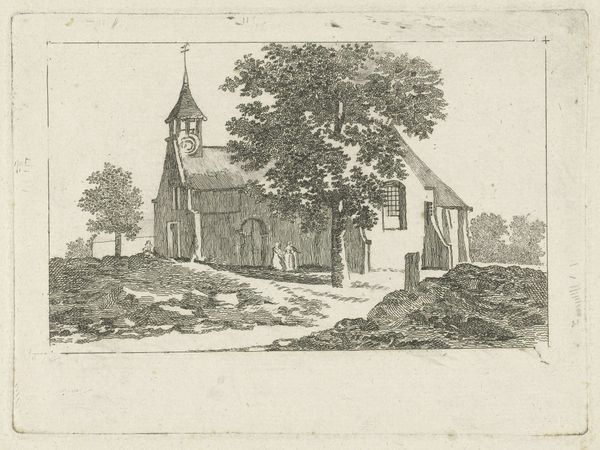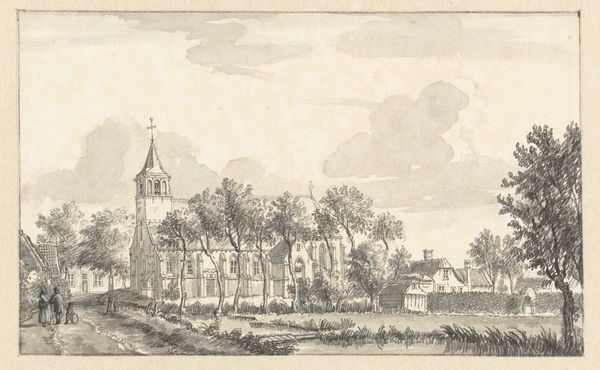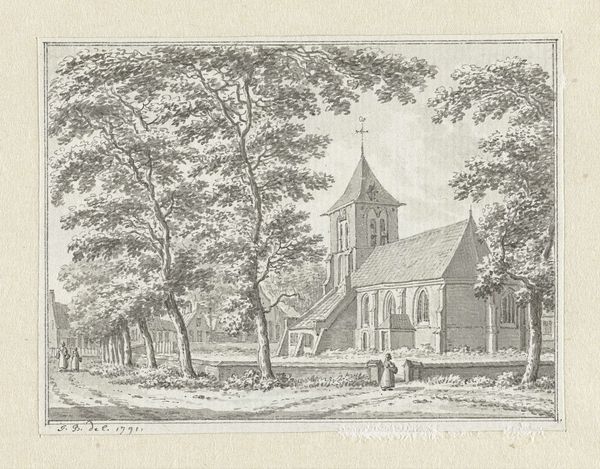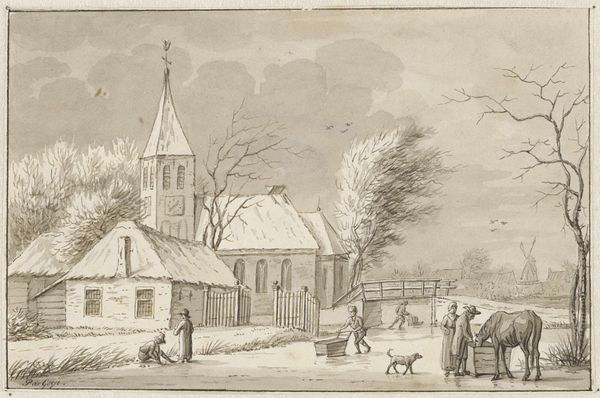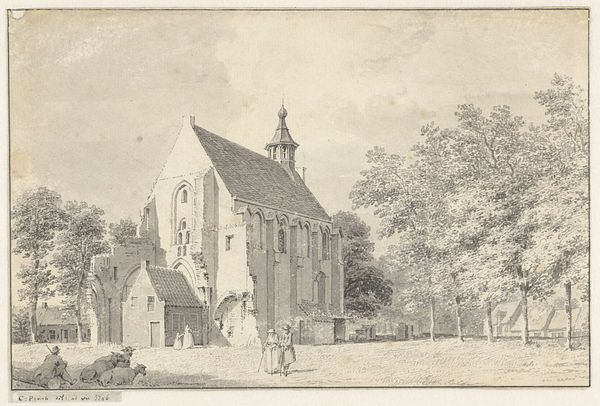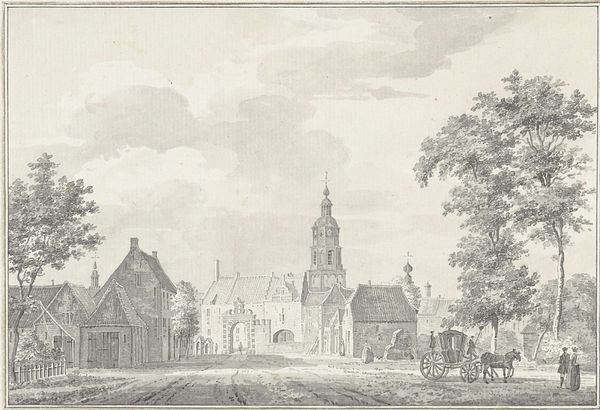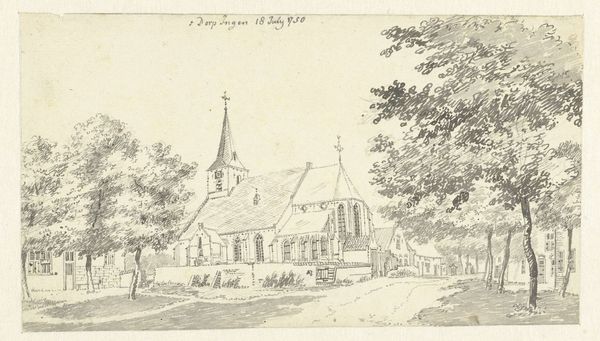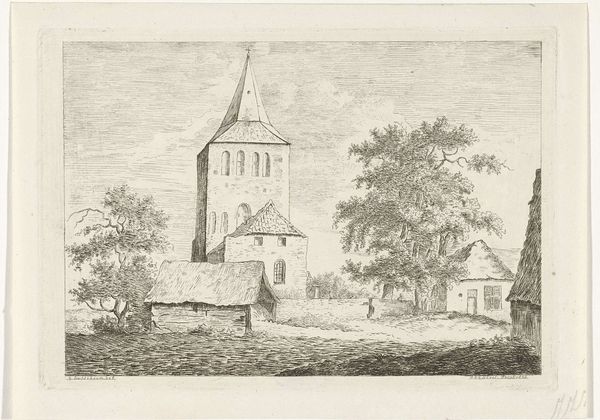
drawing, print, ink, engraving
#
drawing
#
baroque
# print
#
landscape
#
ink
#
geometric
#
line
#
cityscape
#
engraving
Dimensions: height 80 mm, width 101 mm
Copyright: Rijks Museum: Open Domain
Curator: Here we have Hendrik Spilman’s engraving, "Het dorp Hoevelaken op de Veluwe," created sometime between 1737 and 1784. The work resides here at the Rijksmuseum. Editor: It has a rather melancholic air about it, wouldn't you say? All those meticulous lines of the engraving create this austere feeling, even while depicting what I assume is a quiet, ordinary village scene. Curator: Indeed, the medium undoubtedly shapes that mood. Consider how the act of engraving—the physical labor of cutting those precise lines into the plate—mirrors the labor of the villagers who inhabit this space. Their lives, like the artwork, are etched with toil. Editor: You see labor; I see order and deliberate composition. The way the geometric forms of the buildings and the spire of the church anchor the visual field, directing the viewer's eye. Note how the landscape transitions from architectural order on the left to a wilder, organic feel towards the right. Curator: And those very structures are themselves constructed landscapes shaped by labor, think of brickmaking, carpentry, and masonry, all interwoven in a complex social system of production and use. This isn't merely a representation of geometric forms but an artifact of human exertion and transformation. Editor: I suppose there is a human story etched in the lines if one cares to dig it out! But the real draw, I'd suggest, is the formal elegance: the way the artist manipulates line and form to achieve visual harmony and compositional balance, even with humble materials of ink and paper. Curator: Though let’s not forget how even the ‘humble’ material carries embedded social relations, produced for a purpose, for consumption and value within its contemporary context. Every print is, after all, an object for circulation. Editor: A valuable distinction, I grant you. Viewing art is such a different experience when contemplating those intricate processes involved in its manufacture. It allows me to observe this tranquil scene in a more comprehensive manner. Curator: Indeed, recognizing the material conditions behind art deepens our appreciation of the represented content.
Comments
No comments
Be the first to comment and join the conversation on the ultimate creative platform.

